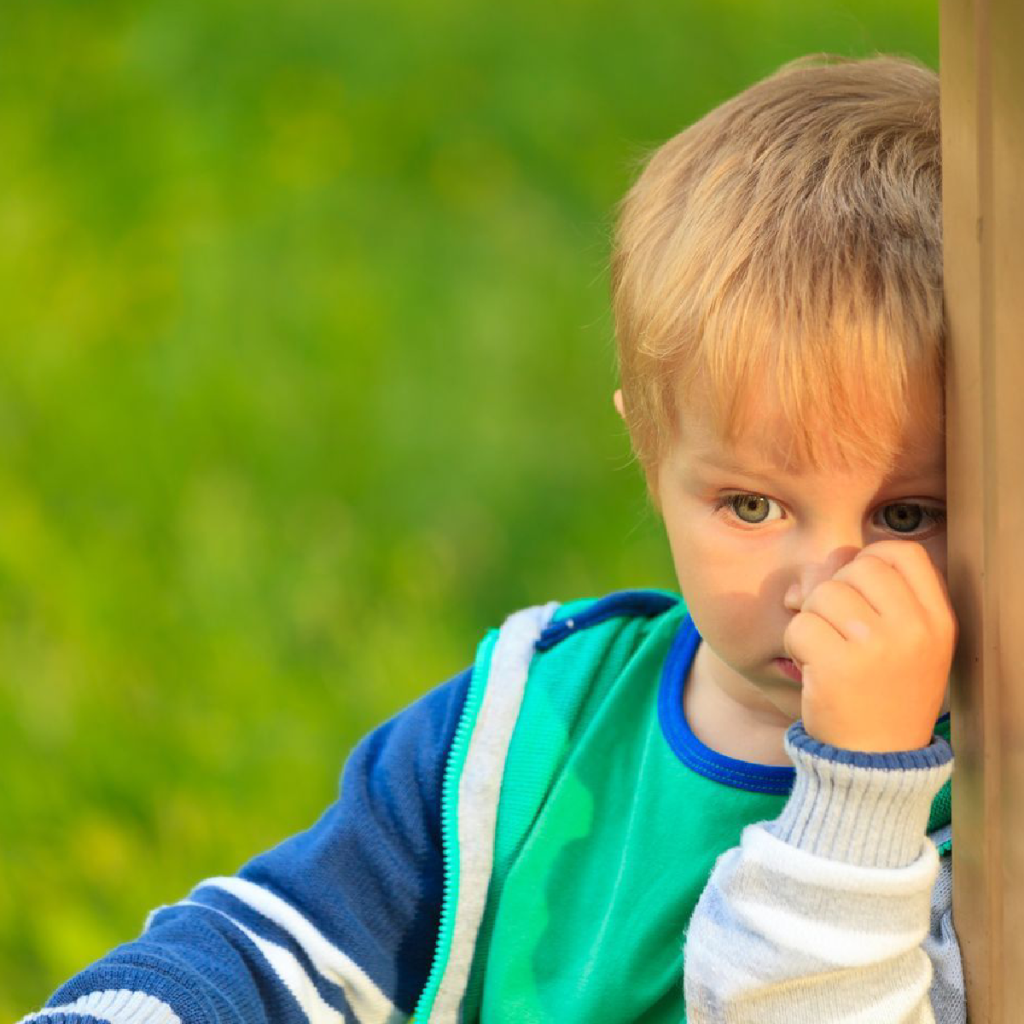Discover effective tips and strategies to handle whining in the park.
How to Handle Whining in the Park: Tips and Strategies
Picture this: you’re enjoying a peaceful afternoon at the park, basking in the warm sunshine and relishing the joyful laughter of children playing. But suddenly, that serene atmosphere is shattered by the all-too-familiar sound of whining. Cue the facepalm!Don’t worry! We’ve got your back. In this article, we’ll dive into the depths of the dreaded whining phenomenon and equip you with some practical tips and strategies to handle it like a boss.

Understanding the Causes of Whining
Before we can conquer the beast that is whining, we must first understand its origins. Whining typically emerges when children feel frustrated, tired, or unable to effectively communicate their needs. It’s like their own special language – a symphony of high-pitched notes that can drive even the most patient parent up the wall.
But what exactly causes this symphony of whining? Let’s delve deeper into the triggers and factors that contribute to this behavior.
Identifying Triggers for Whining in Children
We all know that kids can be complex creatures. Identifying the triggers that lead to whining can be like solving a mysterious puzzle. Is it hunger? Sleep deprivation? Or perhaps the forbidden banana they spotted just out of reach? By observing your child closely, you can become a detective extraordinaire and uncover those triggers with ease.
Imagine this scenario: It’s late afternoon, and your child has skipped their usual nap. They’re tired, cranky, and on the verge of a whining meltdown. As a parent, you quickly realize that sleep deprivation is the culprit behind their whining symphony. By recognizing this trigger, you can take proactive steps to address their fatigue and prevent future whining episodes.
Another common trigger for whining is hunger. Picture this: You’re in the grocery store, and your child’s stomach starts rumbling. They spot a tempting display of colorful candies strategically placed at their eye level. Suddenly, the whining begins. By acknowledging their hunger and offering a healthy snack, you can satisfy their needs and silence the whining orchestra.
The Role of Environment in Child Behavior
It’s not just about what’s going on inside your child’s mind; the environment plays a crucial role too. Is the park too crowded? Is the sun blazing down on their little heads? Maybe they just need some peace and quiet to recharge in their own little space. By creating a comfortable, supportive environment, you can minimize the potential for whining outbursts.
Imagine taking your child to a crowded amusement park. The noise, the long queues, and the overwhelming number of people can easily trigger whining. By recognizing the impact of the environment, you can plan your outings strategically, choosing quieter and less crowded places where your child can feel more at ease and less prone to whining.
Furthermore, consider the effect of sensory overload on your child’s behavior. Bright lights, loud noises, and strong smells can overwhelm their senses, leading to increased irritability and, you guessed it, more whining. By creating a calm and soothing environment, you can help your child find their inner balance and reduce the frequency of whining episodes.
Effective Strategies to Handle Whining
Now that we’ve unmasked the mysterious origins of whining, it’s time to arm ourselves with some super-effective strategies to tackle this challenge head-on.
But before we dive into the strategies, let’s take a moment to understand the psychology behind whining. Whining is often a result of unmet needs or frustration. It’s a way for children to express their emotions when they don’t have the vocabulary or emotional regulation skills to do so effectively. By recognizing this, we can approach whining with empathy and patience.
The Importance of Consistent Responses
Consistency is key, my friend! When your child engages in whining, it’s crucial to respond in a consistent manner. By setting clear boundaries and sticking to them like glue, you’ll empower your child to understand the consequences of their actions. Trust us, this will work wonders!
For example, if your child whines for a toy at the store, instead of giving in to their demands, calmly explain that whining is not an effective way to communicate. Let them know that if they want something, they need to ask politely. By consistently reinforcing this message, your child will learn that whining doesn’t get them what they want.
Additionally, it’s important to be consistent with consequences. If your child continues to whine despite your reminders, follow through with a predetermined consequence, such as a time-out or loss of a privilege. This will help them understand that whining is not an acceptable behavior.
Using Distraction as a Tool
Oh, the power of distraction! When whining rears its ugly head, swoop in with a clever distraction to divert your child’s attention. Engage them in an exciting game, point out something fascinating in their surroundings, or unleash your inner magician with a magic trick. Poof! The whining vanishes in thin air!
Distraction not only redirects your child’s focus but also helps them shift their emotional state. By introducing a new and exciting stimulus, you’re giving them an alternative outlet for their frustration or disappointment. It’s like pressing the reset button on their emotions.
For instance, if your child is whining because they can’t have a cookie before dinner, distract them by suggesting a fun activity they can do together, like building a fort or playing a board game. By shifting their attention to something enjoyable, you’re helping them move past their initial frustration.
Remember, the key to effective distraction is to be engaging and enthusiastic. Make it a memorable experience that captures their interest and leaves no room for whining.
Communication Techniques to Address Whining
Let’s explore some communication techniques that can provide your child with alternative ways to express themselves and help nip whining in the bud.
Whining. It’s a sound that can make any parent’s ears cringe. The high-pitched, nasal tone that seems to go on and on, testing your patience and sanity. But fear not! There are effective communication techniques that can help you and your child navigate through this challenging phase.
The Power of Positive Reinforcement
Children thrive on positive reinforcement, so let’s sprinkle it like confetti! When your child uses their words instead of whining, shower them with praise and rewards. A small treat, a high-five, or a victory dance can go a long way in encouraging them to choose communication over whining.
Imagine this scenario: your child wants a cookie, but instead of whining, they say, “Mom, can I please have a cookie?” You can respond with enthusiasm, “Absolutely! Great job using your words! Here’s a cookie for you!” By reinforcing their positive behavior, you are teaching them that communication is a powerful tool.
Teaching Kids to Express Themselves
Often, kids resort to whining simply because they don’t have the language skills to express their needs. By teaching them age-appropriate words and phrases, you empower them to communicate effectively. Encourage them to use “I feel” statements and help them articulate their desires in a more constructive way. Who knew that words had such magic?
Picture this: your child is playing with a toy, and their sibling wants a turn. Instead of whining, they say, “I feel frustrated because I want to play with the toy too.” You can acknowledge their feelings and help find a solution, “I understand how you feel. Let’s take turns so that both of you can enjoy playing with the toy.” By teaching your child to express themselves, you are fostering their emotional intelligence and promoting healthy communication.
It’s important to remember that teaching these communication techniques takes time and patience. Be consistent in your approach and provide gentle reminders when your child slips back into whining. With practice, they will develop the skills to express themselves effectively and whining will become a thing of the past.
Preventing Whining Before It Starts
The best way to tackle whining is to prevent it from happening in the first place. Let’s dive into some preventative strategies, shall we?
Establishing Clear Expectations
Setting clear expectations is like laying down the law – kindly, of course! Make sure your child knows what you expect from them before you even step foot in that park. Clearly communicate the rules and boundaries, and reinforce them regularly. This way, your little one knows exactly what’s expected and will be less likely to resort to whining.
For example, if you’re heading to the park, let your child know that they are expected to share toys with others and take turns on the swings. Explain that whining will not be tolerated and that there will be consequences for not following the rules. By setting these clear expectations, you are giving your child a roadmap for appropriate behavior, reducing the likelihood of whining.
Additionally, it can be helpful to involve your child in the process of establishing expectations. Sit down together and discuss what behaviors are acceptable and what are not. This way, your child feels a sense of ownership over the rules and is more likely to adhere to them.
The Role of Routine in Preventing Whining
Ah, routines. They’re like magical spells that keep whining at bay. Children thrive on predictability and routine, so incorporating a consistent schedule into your day can work wonders. By establishing regular meal times, nap times, and play times, you create a sense of stability that minimizes the chances of whining.
Consider creating a visual schedule for your child, especially if they are too young to read. Use pictures or symbols to represent different activities throughout the day, such as eating, playing, and sleeping. This visual aid can help your child understand what to expect and reduce anxiety or frustration that may lead to whining.
Furthermore, routines provide a sense of security and comfort for children. When they know what comes next, they feel more in control of their environment, which can reduce the need for whining as a means of seeking attention or expressing frustration.
Remember, consistency is key when it comes to routines. Try to stick to the schedule as closely as possible, but also be flexible when necessary. Life happens, and unexpected events may disrupt the routine from time to time. However, by maintaining a general structure, you can minimize the chances of whining becoming a regular occurrence.
Handling Public Tantrums
We’ve all been there – the dreaded public tantrum. It’s like a curveball that catches you off guard, but fear not! With these tips, you’ll be prepared to handle it like a pro.

Staying Calm in the Face of a Tantrum
When your child throws a public tantrum, it’s easy to feel embarrassed, frustrated, or even angry. Breathe in, breathe out, and draw on your inner zen master. Staying calm sends a powerful message to your child that their behavior won’t shake you. Stay cool, my friend!
When to Ignore and When to Intervene
Here’s the golden rule: ignore the minor meltdowns and intervene when necessary. Sometimes, children just need a release valve for their emotions. If the tantrum isn’t causing harm or endangering anyone, it may be best to let them work through it until they calm down naturally. However, if the situation becomes unsafe or the tantrum escalates, step in and guide your child towards a more positive resolution.
In conclusion, handling whining in the park requires a combination of understanding, communication, prevention, and good ol’ patience. By employing these tips and strategies, you’ll be well-prepared to conquer whining like the superhero parent you are. So, grab your superhero cape, head to the park, and let the whining battle begin – you’ve got this!



